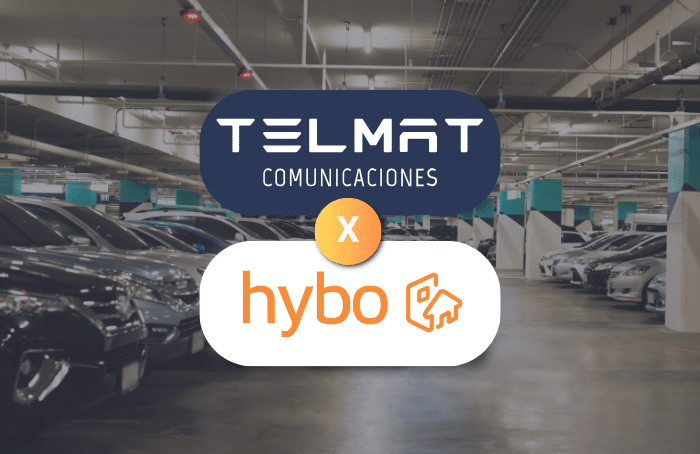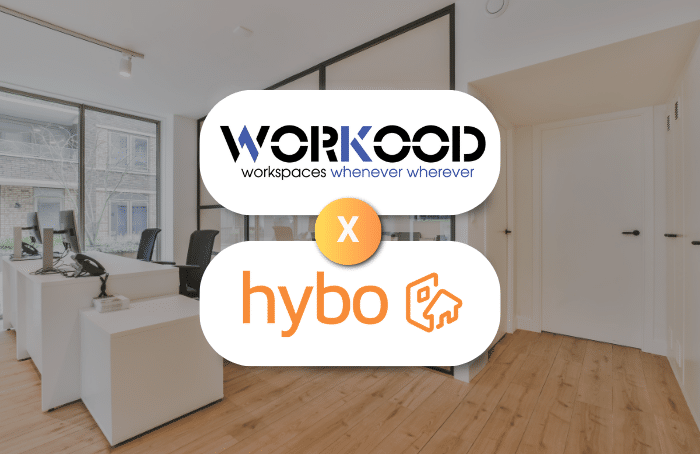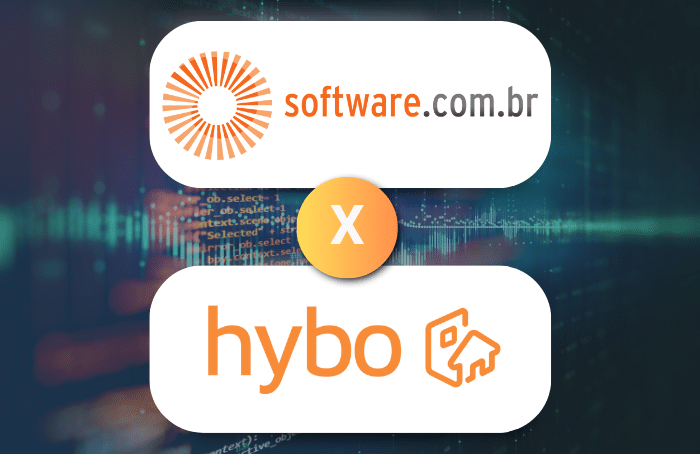How to increase employee engagement in a hybrid office?
Hybrid work has expanded in our world of work in a very short time, and far from disappearing, it is still on the rise.
The main drivers of this post-pandemic hybrid growth are two factors. On the one hand, the benefits it brings to companies, and on the other, the benefits it brings to workers.
This democratisation is such that, according to IWG, a global provider of flexible workspaces, jobseekers see the hybrid model as an essential requirement for new workplaces, so much so that nine out of every five jobseekers consider hybrid work to be as important as the economic benefits.
And as published in Microsoft’s Work Trends Index 2021, employees want to choose when, where and how they work and expect companies to provide them with the tools they need to achieve this.
Both increased employee empowerment and new candidate requirements have led to projected increases in hybrid work in the near term.
Hybrid working provides employees with greater work flexibility, away from commuting and marked time, the new model offers the possibility of more family time or other opportunities through time management. However, for those professionals who are used to being on-site, this new model may generate a greater risk of isolation among colleagues.
What is employee engagement?
Employee engagement is the degree of loyalty an employee has to a company and its goals, both intellectually and emotionally. Highly engaged employees are committed to the company and its goals, working more for the organisation’s achievements than for their paychecks.
According to the study presented by Microsoft, employees with hybrid or remote work models have a higher percentage of engagement, around 92%.
How to increase hybrid employees' engagement?
Within the hybrid working model there are various forms of implementation depending on the guidelines of each company. The common points among all possible implementations is that the worker will have days when he/she will work at home and others at the office. Where the differences come in is in the number of teleworking days and the time flexibility that the company sets.
On telework days, not being in the office limits employees’ relationships within the company. Teleworkers have few relationships outside their direct team, and according to Microsoft’s “Microsoft WTI Report 2021”, current trends show that close relationships within teams are decreasing over time.
To address this lack of connection, managers and team leaders must develop new ways to keep employees engaged and connected.
That’s why we want to share with you some tips to improve employee engagement, build strong relationships or foster collaboration and solidarity inside and outside our hybrid office.
1. It fosters relationships between the team
The work environment is fundamental to having a cohesive and collaborative office. Co-worker relationships help foster a workplace where people feel comfortable and have strong relationships with team members. These interactions are difficult to achieve in a hybrid office, where employees work remotely several days a week.
To create these bonds and relationships, team leaders need to bring a new role to the table – to be the point of engagement between their employees.
To do this, leaders need to meet individually with each member of their team and encourage conversations, presentations and advice.
In team meetings, it is good to create personal conversation spaces, allowing your team to talk about their personal lives without creating a moment that can be offensive. Similarly, creating remote meetings for coffee or more informal chats with your employees is good and helps to foster bonds.
When leaders foster authenticity through personal interactions, they can help drive inclusion, productivity and innovation in the hybrid office, according to Microsoft’s “Microsoft WTI Report 2021”.
2. Flexibility is basic
According to the Forbes report “How to Engage Remote Employees in 5 Easy Steps” 87% of employees who worked remotely during the pandemic would prefer to continue to do so in the future.
Teleworkers, during the pandemic, learned how to be productive and this has to be the cornerstone of building trust and providing flexibility to the company’s talent.
To do this, companies need to recognise and integrate the desire for flexibility, giving their employees different options in order to produce engaged employees who feel satisfied and recognised by their company.
A good integration could be that the “how” is determined by the company, i.e. how many days teleworking is allowed, but it would be good to leave the choice of “when” to the employees, giving the employee the flexibility to choose which days of the week to telework according to his or her needs.
Thanks to these rules, camaraderie could be established, as employees could choose the days they work in person, depending on how many of their colleagues work in person.
3. Recognition in a remote environment
Even as companies transform their offices to hybrid, they must not forget to recognise their employees on an ongoing basis.
According to the report presented by Microsoft, many companies that focus on implementing hybrid work are reducing their recognition of their employees. However, the need to recognise and reward their employees has not.
There are many virtual recognition programmes and the company can choose which channel or medium is the easiest to use. However, there are two fundamental premises for recognition to be effective, the first is that all employees should be able to see it, and the second is that it should be prompt, and not after a period of time.
To ensure that this does not happen, it is important to set standards for recognition and bonuses in hybrid teams to keep employees engaged and motivated.
4. Environment and healthy practices
Hybrid working brings health benefits, given that 20% of sick leave is caused by psychosocial risks such as stress, bullying and burnout syndrome. Another business benefit arising from the implementation of hybrid working is the improvement of employee mental health in the workplace. Having a flexible working model has been proven to reduce employee stress.
However, teleworking can be harmful if the employee is not educated in this new environment. This requires advice and support, both physical and psychological, for the teleworker.
It will be essential to inform the employee about the necessary furniture at home, as well as the correct postures in a new environment. In the same way, it will be important to establish the necessary breaks and maximum times per day.
Resting and disconnecting are important factors to increase the employee’s commitment to your company, commit to their rest and they will commit to your objectives. To do this, it is key that the company sets rest times throughout the day and establishes limits on the availability of its employees.
5. Inform your workers
In hybrid working models, information to the employee tends to decrease for those companies that do not take this concept into account, and this can lead to employee isolation that affects their commitment by not being aware of and feeling part of the day-to-day workings of the company.
For this reason, it is important to establish guidelines so that all employees are kept up to date with company events and news.
Even if the employee is not 100% physically present, if the company periodically sends a newsletter with all the necessary information to the employee, this will increase the employee’s feeling of relevance to the group.
Informative newsletters could include events, achievements, news, publications, employees’ anniversaries, birthdays, etc. All this helps employee integration, coalition and commitment.
6. Physical events
Hybrid working brings many benefits for both the company and the employee, however, it is good to create physical events, away from screens and cameras, by creating shared physical spaces.
These small gatherings foster connection between employees and, in addition, group relevance in the employees participating in the event.
It is good to create, as much as possible, physical highlights, such as events or conferences that interest your employees, so that employees become more engaged by being the main actors in these events. It is important not to forget and maintain past customs such as company dinners, anniversary events, etc.
Benefits of employee engagement
If your employees are engaged with your company, productivity will grow and your team will do their best to achieve your goals. However, if your employees are not engaged, your company can lose a lot of money due to low employee productivity, with employees not achieving their goals or making 60% more mistakes, according to Forbes.
Lack of engagement is also the cause of talent drain. Providing the means for engagement retains and attracts talent in companies. Employee engagement is the thermometer of whether your employees are proud to be part of your company.
Empower your workforce with hybo
Having software that specialises in the hybrid model and is integrated in large companies that use hybrid working in their day-to-day work is a success story. Hybo helps thousands of employees to manage their time, their remote work and their shared spaces.
Empowering and liberating your employees by choosing when and what zone they can occupy improves their connection and experience with their work environment and their team. It also gives them a stake in the company, making them feel an important part of it, with freedom of choice.
With hybo, your team can book workspaces, meeting rooms, canteen shifts, parking spaces, etc. And all this with a single objective, to put the employee at the centre, creating a new hybrid work experience.













